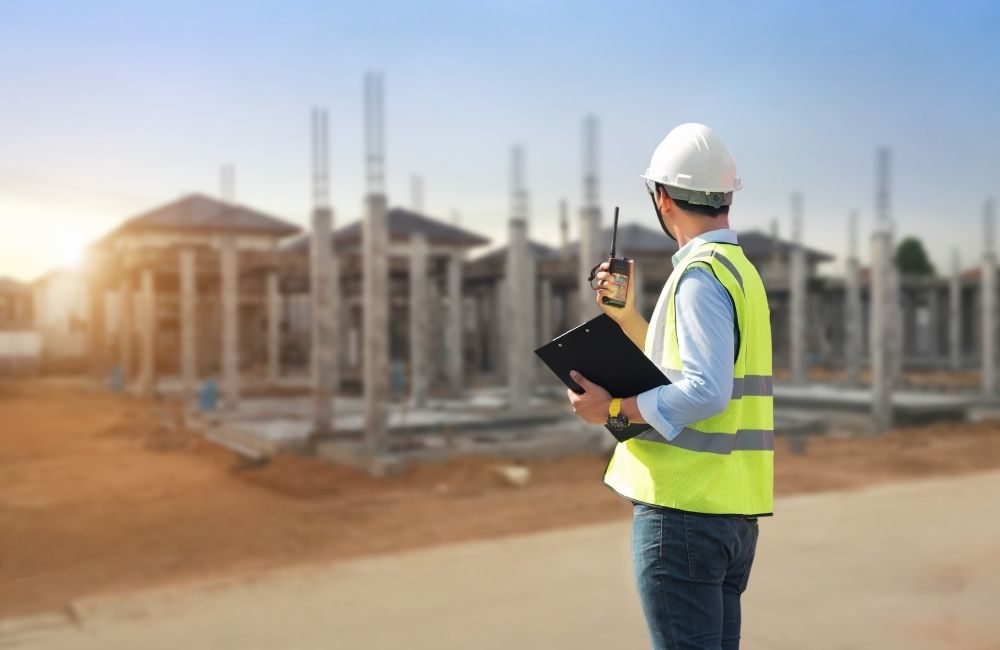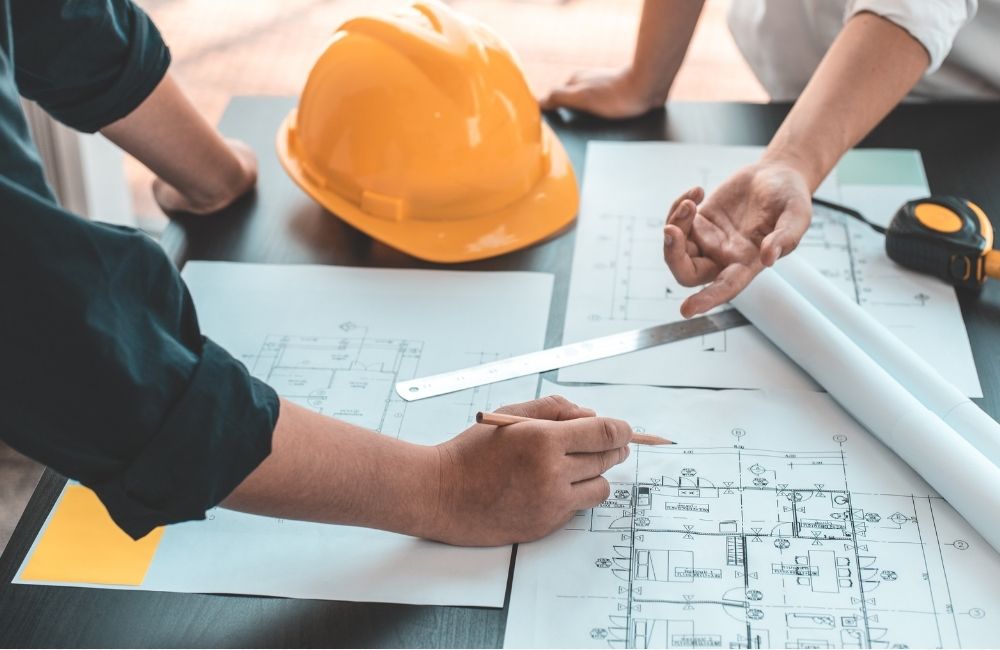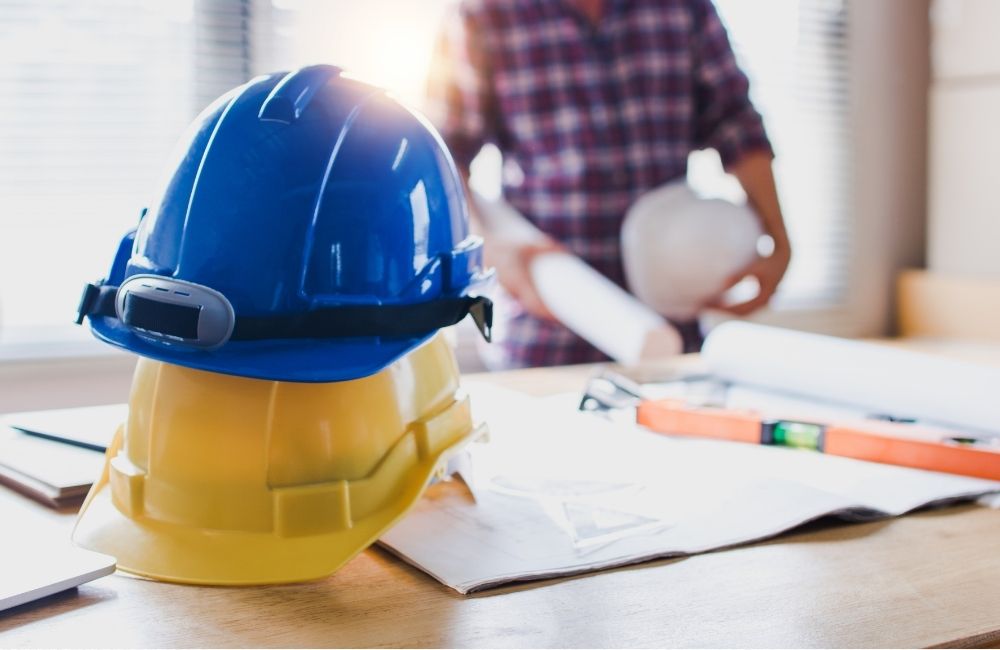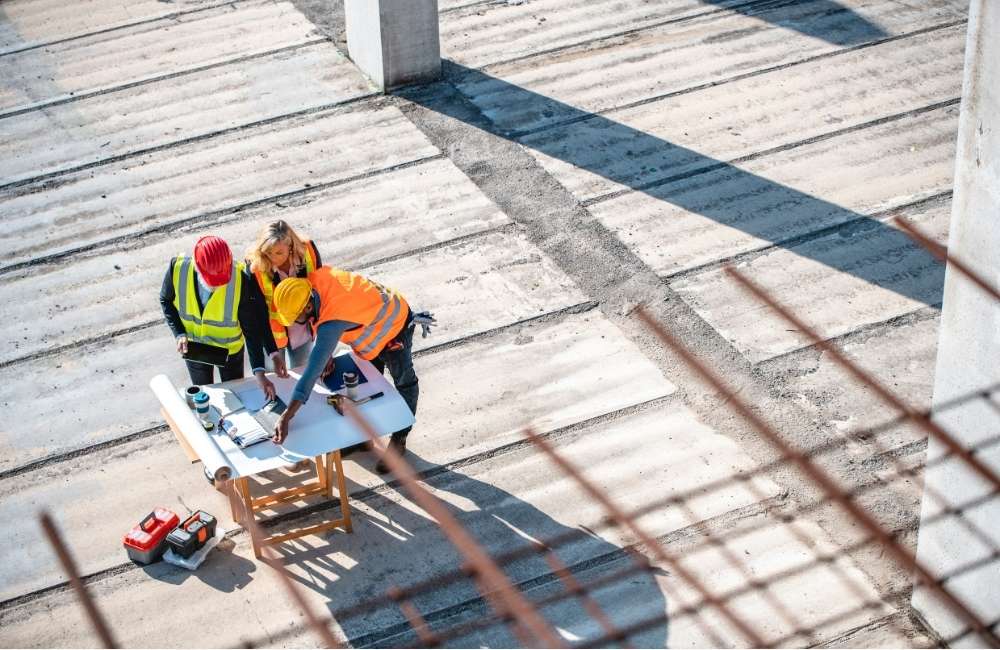Design-build construction is a project delivery method where a single entity, the design-build team, works under a unified contract to provide design and construction services. Unlike traditional construction methods, where design and construction services are split between different entities, design-build construction integrates these services to streamline the entire process. This method has gained significant popularity due to its numerous benefits.
We will highlight the key advantages of design-build construction. By understanding these benefits, stakeholders can make informed decisions about their construction projects, ensuring efficiency, cost-effectiveness, and high-quality outcomes.
What is Design-Build?
Design-build construction is a collaborative approach that merges the designer's and constructor's roles into a single entity. This method simplifies project management, leading to better communication, faster project completion, and cost savings.
Design-build construction has its roots in ancient times, but it gained modern recognition in the 20th century. Today, it is widely adopted for its ability to deliver complex projects efficiently and effectively.
Key Players in Design-Build Construction
The design-build team typically includes architects, engineers, and construction professionals who work together from the project's inception to completion. This collaborative effort ensures that all project aspects align with the client's vision and objectives.
Steps Involved in Design-Build Projects
- Project Planning and Feasibility: Initial discussions to understand the client's needs and project feasibility.
- Design Development: The design team creates preliminary designs, which are refined based on client feedback.
- Construction Planning: Detailed plans and schedules are developed to ensure efficient project execution.
- Construction: The construction team begins work with continuous collaboration between the design team, project management team, and the client.
- Project Completion: Final inspections and adjustments are made before handing over the completed project to the client.
10 Benefits of Design-Build Construction
Here are the top ten benefits of design-build construction and why it has become a preferred choice for many clients and project managers:
1. Streamlined Communication
One of the primary benefits of design-build construction is the streamlined communication resulting from a unified team structure. When designers and builders work together under a single contract, it eliminates the traditional silos that often hinder project progress. This collaboration fosters a more cohesive and efficient working environment, ensuring that everyone is on the same page from start to finish.
In traditional construction methods, communication gaps can lead to misunderstandings, errors, and delays. Design-build construction minimizes these issues by promoting continuous interaction among all team members. This seamless communication flow ensures that issues are promptly addressed, leading to smoother project execution.
Design-build construction enhances collaboration and coordination by having all team members work towards a common goal. This alignment allows for better planning and execution, resulting in projects completed on time and within budget. Integrating design and construction teams also enables faster decision-making, reducing delays and improving project outcomes.
2. Faster Project Completion
Design-build construction allows for overlapping design and construction phases, significantly reducing project timelines. Traditional methods often involve a sequential approach, where construction can only begin after the design is complete. In contrast, design-build teams can start construction work on parts of the project while other sections are still being designed.
This integrated approach accelerates project timelines by eliminating the need for separate bidding and contracting phases. By overlapping the design and construction processes, design-build construction reduces the project's overall duration. This efficiency is particularly beneficial for projects with tight deadlines or those requiring quick completion.
Real-world examples highlight the time-saving benefits of design-build construction. On average, design-build projects are completed 33% faster than traditional methods.
3. Cost Savings
Design-build construction offers better budget management by integrating cost estimation into the design phase. This approach allows for more accurate budgeting and reduces the risk of cost overruns. According to a Design-Build Institute of America report, design-build projects lead to less cost than traditional projects.
Design-build construction ensures that the project stays within budget by involving all stakeholders in the budgeting process from the beginning. The integrated team can identify cost-saving opportunities and make informed decisions to optimize resources. This proactive approach to budget management minimizes the risk of unexpected expenses and ensures that the project remains financially viable.
Value engineering is a systematic method for improving a project's value by examining its functions. In design-build construction, value engineering is integrated into the design process, enabling the team to identify cost-saving opportunities without compromising quality. This proactive approach ensures that projects stay within budget while meeting the client's needs.
4. Single Point of Responsibility
One of the standout advantages of design-build construction is the single point of responsibility. Accountability is clear and straightforward, with a single entity responsible for both design and construction. This reduces the potential for conflicts and finger-pointing, ensuring smoother project execution.
In traditional construction methods, multiple contractors and designers can lead to confusion and disputes over responsibilities. Design-build construction eliminates these issues by consolidating all responsibilities under one contract. This single point of accountability ensures that the design-build team is fully committed to delivering a successful project, as their reputation and future business depend on it.
Having a single point of contact streamlines decision-making processes. Clients can quickly address concerns and make decisions without navigating through multiple layers of management. This efficiency leads to faster resolution of issues and keeps the project on track.
5. Enhanced Quality Control
Design-build construction makes it easier to maintain consistent quality standards throughout a project. The unified team is committed to the same quality benchmarks, ensuring the project meets the desired specifications.
The close collaboration between designers and builders ensures that quality is a top priority at every project stage. The design-build team works together to establish and maintain high standards from the initial design to the final construction—this commitment to quality results in a finished product that meets or exceeds the client's expectations.
The feedback loops inherent in design-build construction promote continuous improvement. Regular communication and collaboration between team members allow for real-time adjustments and enhancements, resulting in higher overall project quality.
6. Better Risk Management
Design-build construction offers effective risk mitigation strategies. The integrated approach allows for early identification and management of potential risks, minimizing their impact on the project.
The collaborative nature of design-build construction allows the team to identify and address potential risks early in the project. This proactive approach ensures that risks are managed effectively, reducing the likelihood of costly delays and disruptions. By working together to identify and mitigate risks, the design-build team can deliver a successful project that meets the client's needs.
The shared risk between the design and build teams fosters a collaborative approach to problem-solving. Both parties work together to address challenges, ensuring that risks are managed effectively and the project stays on track.
7. Improved Innovation and Creativity
The collaborative environment of design-build construction encourages innovation and creativity. When designers and builders work together from the outset, they can explore creative solutions that might not be possible in a traditional setup.
The integrated approach of design-build construction allows for more creative problem-solving and innovation. The design-build team collaborates to develop and implement innovative solutions that meet the client's needs. This collaborative environment encourages creativity and ensures that the project is completed successfully.
8. Flexibility and Adaptability
Design-build construction allows for flexibility in project execution. The integrated team can more easily adapt to changes in scope, design, or external factors than traditional methods.
The collaborative nature of design-build construction allows the team to adapt to changes and challenges more easily. The design-build team works together to develop and implement adaptive plans that meet the client's needs. This flexibility ensures that the project stays on track and meets the client's expectations.
Real-time adjustments are possible without major disruptions, ensuring that the project can continue smoothly even when unexpected changes occur. This adaptability is crucial for managing complex projects in dynamic environments.
9. Stronger Client Relationships
Design-build construction promotes stronger client relationships by involving clients throughout the project. Regular updates and consultations ensure the project aligns with the client's vision and expectations.
The collaborative nature of design-build construction allows for greater client involvement and input. The design-build team works closely with the client to meet their needs and expectations.
The open and transparent communication fostered by design-build construction builds trust between the client and the project team. Clients have greater visibility into the project's progress, which enhances their confidence in the outcome.
10. Sustainable and Green Building Practices
Design-build construction facilitates the incorporation of sustainable practices. The collaborative approach allows for the early integration of green building standards, ensuring sustainability is a core focus throughout the project.
The integrated approach of design-build construction allows for the early integration of sustainable practices. The design-build team works together to develop and implement sustainable solutions that meet the client's needs. This collaborative approach ensures the project is completed successfully and meets the client's sustainability goals.
Frequently Asked Questions
What is the difference between design-build and traditional construction?
Design-build construction integrates design and construction services under one contract, whereas traditional construction typically separates these services into distinct contracts.
How does design-build construction impact project timelines?
Design-build construction often leads to shorter project timelines by allowing design and construction phases to overlap, accelerating the overall process.
Is design-build construction suitable for all types of projects?
While design-build construction is highly versatile, its suitability depends on the specific requirements and complexity of the project. It is particularly beneficial for projects needing fast completion and close collaboration.
What are the typical stages of a design-build construction project?
The typical stages include project planning and feasibility, design development, construction planning, construction execution, and project completion.
How does design-build construction ensure cost efficiency?
By integrating cost estimation into the design phase and allowing for value engineering, design-build construction helps manage budgets effectively and reduce the risk of cost overruns.
Partner with Claris for Your Next Project
The benefits of design-build construction are numerous and impactful, from streamlined communication and faster project completion to cost savings and enhanced quality control. If you're considering a construction project and want to experience these benefits firsthand, partner with Claris Design•Build,.
With an industry-leading Insurance Safety Modification rate of 0.87, we ensure the highest safety standards on every project. Our commitment to safety, quality, and efficiency makes us the ideal choice for your construction needs.
Contact us today to discuss how our design-build approach can help you achieve your project goals efficiently and effectively. Let us bring your vision to life with our expertise and dedication to excellence.






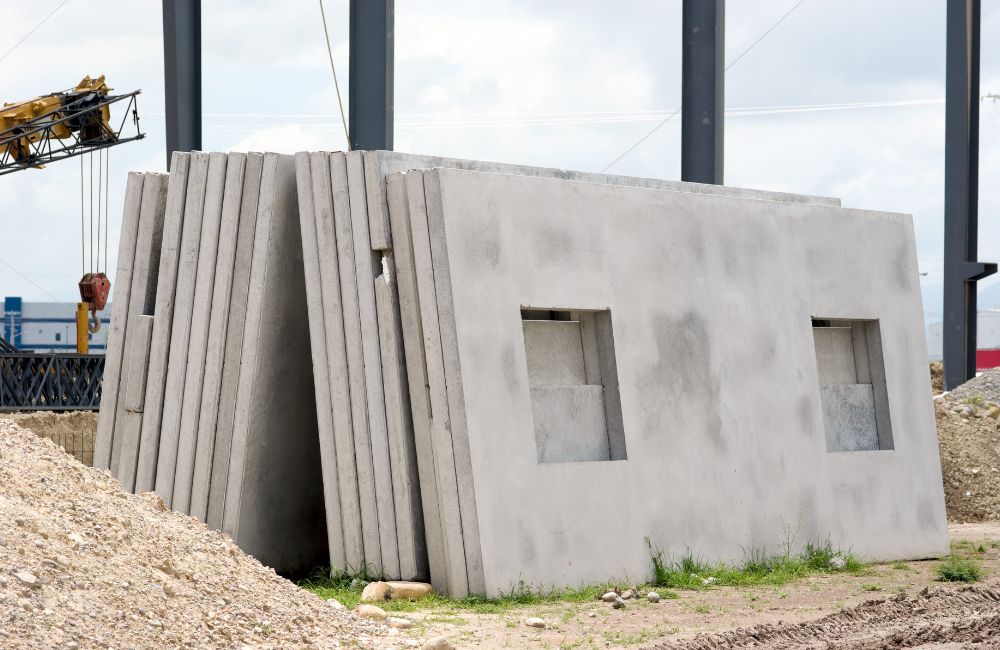
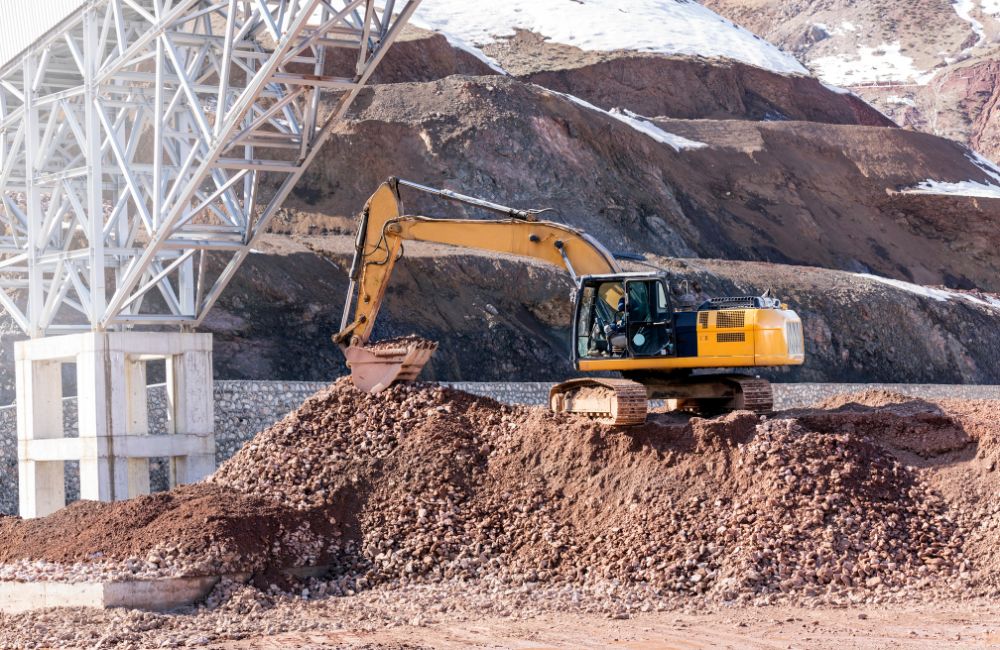
![[2025 UPDATE] Commercial Construction Cost per Square Foot in the US](https://www.clarisdesignbuild.com/wp-content/uploads/2025/04/2025-UPDATE-Commercial-Construction-Cost-per-Square-Foot-in-the-US-3.jpg)
